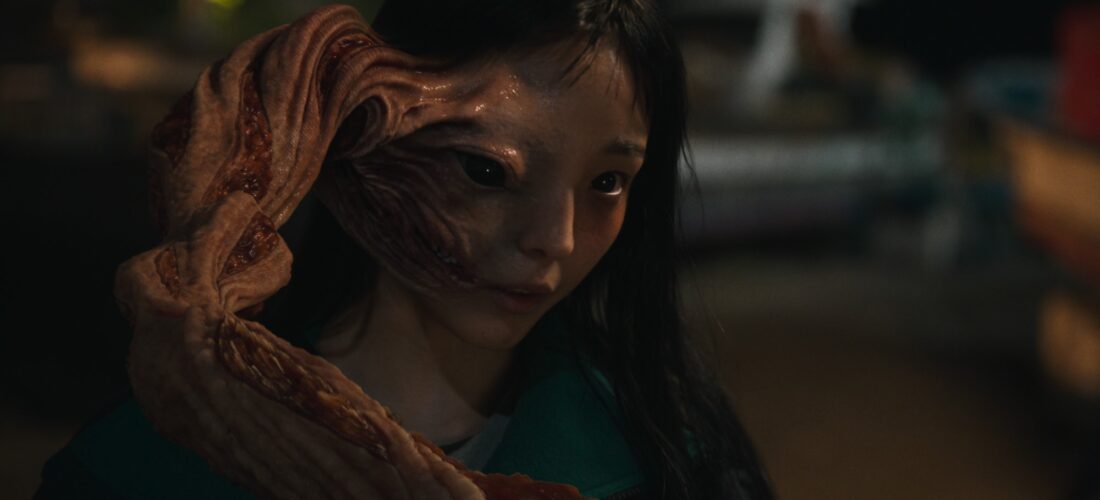‘Parasyte: The Grey’ review: ‘Train To Busan’ director spins a decidedly human tale
Anime fans have long been plagued by the dreaded “live-action adaptation”, which has claimed many a masterpiece to bad CGI and lacklustre treatment. The good news about Parasyte: The Grey is that you don’t have to worry about half-hearted effects in this one. Director Yeon Sang-ho’s (Train to Busan, Hellbound) telling of Parasyte – set in a world where aliens rain down from the sky and take over human brains – does not skimp on the brutality.
Squelching sounds set the mood for anticipated body horror, and the mewling of a parasite sends one’s back ramrod straight. Yeon clearly loves his parasites and his humans alike, bringing the world to life with meticulous detail and realism. While we appreciate the aesthetic effort put into the series, we’d have liked to see some of it transferred to the story and treatment as well. Yeon has been clear in separating Parasyte: The Grey from Hitoshi Iwaaki’s source material, but perhaps this insistence on keeping the two apart also makes his work relatively less engaging and compelling.
In a world where parasitic aliens have started taking over humans, Jeong Su-in (Jeon So-nee), a young white-collar worker becomes host to a parasite called Heidi after a fatal accident. Su-in and Heidi, however, find themselves in a peculiar position – since Heidi was forced to repair Su-in’s body, it couldn’t completely take over her brain, leading to both retaining their full consciousness and co-existing in a unique situation. Treading the line between human and monster, neither will be accepted by their kin, facing constant danger from both other parasites and The Grey, an organisation created to eliminate all parasites.
Jeon So-nee switches between her two roles with uncanny ease. The subtle visual shifts in her face as she switches out the softness of Su-in with Heidi’s calculated ruthlessness are exceedingly effective. Her dynamic with Seol Kang-woo (Koo Kyo-hwan) is easily one of the most enjoyable aspects of the show, especially how he acts as both an unexpected voice of reason between Heidi and Su-in. Completing this trifecta is Lee Jung-hyun as Choi Jun-kyung, the leader of Team Grey. Lee can be over-the-top in the first half of the series, but mellows out considerably afterwards, balancing out Jeon and Kang much more aptly.
[embedded content]
Fans of the anime and manga will also recognise the parallels between Su-in and Shinichi Izumi, the protagonist from the original manga series, but that is where the similarities end. In both the manga and the anime, Shinichi and Migi (his parasite) were able to have full fledged conversations in real-time, fostering a bond that was both strained and endearingly heartbreaking. Curious, cunning and hilariously direct, Migi was imperative to Shinichi’s development as both human and parasite came to understand their species’ persuasions and follies and started treating each other as friends.
In Yeon’s adaptation, Heidi and Su-in only communicate through letters, since the former can only take control of Su-in while she’s asleep. While they eventually do come to care for each other – with Heidi assuring Su-in that she isn’t alone – their newfound camaraderie would have been far more effective had it not been for the literal distance between them. Though, this switch-up also puts Heidi’s noticeable physical absence into a new perspective by making humans the focal point.
In highlighting a more grounded approach to human nature – the way he did with previous works like Train to Busan and Hellbound – Parasyte: The Grey does succeed in its own right. As opposed to the manga’s sweeping conversations about humankind’s place in the larger cosmos, Yeon shows how disaster exposes both the primal best and worst of people, yet delicately infusing the story with moments where the parasites prey on humans’ faith only to be stumped in the face of life.
Parasyte: The Grey is available to stream exclusively on Netflix
